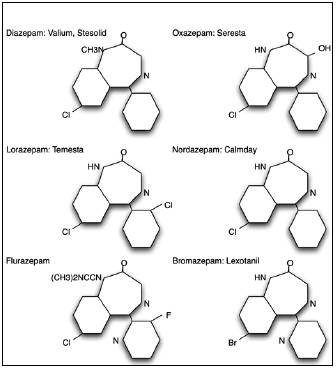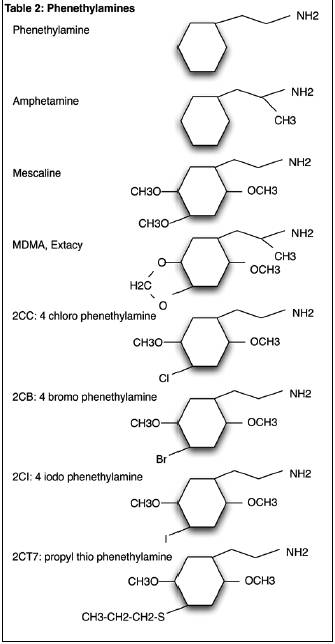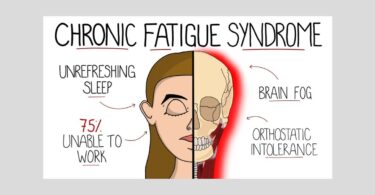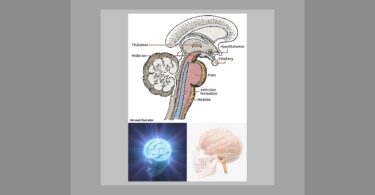There’s a growing tendency in homeopathy to study families of remedies. This is in contrast with the past when mostly single remedies were studied, often without knowledge about the origin of the remedy. Some homeopaths have doubts about whether the study of families is justified. In this chapter arguments will be brought forward to show that it’s not only justified, but also a necessary development.
Classifications are already very old in homeopathy, although not very well thought about. There is even a resistance to classifications, coming from the idea that it is “theorizing”. The first classification was made by Hahnemann, with the classes Psora, Sycosis and Syphilis.
Families
There are many kinds of families. The first and most obvious are the “natural” families as developed in chemistry and biology. Although most scientists see them as “natural” and with meaning, there are some scientists who think that every grouping of plants is just as good as any other. The examples below will show that botanical and zoological families are based on more than some arbitrary grouping.
Example Solanaceae
A good example is the family of the nightshades, the Solanaceae. This is a good example because we know quite a few of the members of that family very well in homeopathy. Members are Belladonna, Hyoscyamus, Stramonium, Mandragora, Dulcamara and Capsicum. Looking at the pictures of the plants and their flowers, the similarities are already obvious. A closer botanical study of the forms and structures makes the similarity even more clear. That’s the reason why Linnaeus placed them in one family, in the past. Originally the families were drawn up on the basis of the form of the plants and their flowers. Later chemical analysis of the contents of plants showed that many families have typical molecules. In the Solanaceae one can find typical alkaloids such as atropine, hyoscine and scopolamine. Another group of typical chemicals are the solanines. Recent research on the DNA of plants has shown that plants from the same family also have DNA sequences that are typical of the family. Intoxication with plants from the Solanaceae family has very typical symptoms. Many of them are expressions of the paralyzing of the parasympathetic system and are expressed as “fight or flight” reaction. The organism is on full alert, prepared for immediate action. Symptoms are tension, raised heart beat, rapid respiration, wide-open eyes and pupils, senses very acute, muscles in tension. All relaxation is gone, digestion is halted, and all the blood goes to the organs for action.
So the members of the Solanaceae have similarity in form, chemicals, DNA, intoxication and Materia Medica picture.
Example Benzodiazepines
Another example is from the field of pharmacy. Comparing the benzodiazepines, it’s clear that they have very similar chemical structures. And they have very similar pharmaceutical effects: relaxation, diminishing of anxiety, promoting sleep. For examples see table.
Table 1

Example Phenethylamines
Shulgin has done a lot of research on phenethylamines. He has written about it in “PIHKAL”, an abbreviation of “Phenethylamines I Have Known And Loved”. He has synthesized 79 of them and tried them on himself and a group of “provers”. The majority of them have hallucinogenic or consciousness promoting qualities and are forbidden by law. The best known out of the group are amphetamine, ecstasy and mescaline, which is the most active chemical from the “homeopathic” Anhalonium. The chemical structure of the phenethylamines is very similar, and so are their effects. It’s curious that the results of the provings often confirm our homeopathic knowledge. “2CB (4-bromo-2,5-dimethyoxyphenethylamin)” has a Bromium atom and has very erotic and passionate qualities. “2CI (4-iodo-2,5-dimethyoxyphenethylamin” has an Iodum atom and produces a very energetic state. “2CT7 (2,5-dimethoxy-4-propylthiophenethylamin” has a Sulphur atom and has the peculiarity of leading to theorizing and hot feet and legs.
See table 2.

Other examples
It’s very easy to find many examples. Many pharmaceutical groups are similar: penicillins, corticosteroids, estrogens, proprionic acid derivatives (example: ibuprofen) and antihistamines for example. It’s common in the pharmaceutical industry to find a similar substance similar to what one’s competitor has found, to be able to compete in the relevant pharmaceutical field, the “me too” strategy.
In chemistry many groups have similar effects: halogens, alkali metals, noble gases, periodic table series and stages. The Lanthanides all have strong electric and magnetic qualities. The lanthanide copper oxides are very good superconductors at high temperatures. There are many examples in biology: Lamiaceae all have similar nice smells. Trees all have “wood”. Cats have claws and eat meat.
Perfinity
There’s a principle behind all this. The principle is that similarity in one field or dimension indicates similarity in another field. Similar substances will have similar effects. I’ve given the principle the name “Perfinity” because I couldn’t find a good word in our language. The nearest is affinity, but that means “related”. Perfinity means that similar substances will have similar qualities, the similarity in one field working “through” (per) in another field. In homeopathy this can be expressed as “similar remedies will have similar pictures”. It’s a principle that is encountered everywhere in science, industry and nature.
Signature
The conclusion is that similarities in plant form lead to similarities in homeopathic picture. It’s one of the expressions of the Perfinity principle. But that’s the doctrine of signatures. Here we have a problem, in the sense that Hahnemann was very much denying such a possibility (Organon §2 for example) and it’s still a discussion in the homeopathic literature (Appell, Habich, Morrison, Saine, Wichmann). As we see from the above example, similar plants have similar chemicals and have similar effects.
Probably Hahnemann had an aversion to such things as “signature” because he had an aversion to speculation. And the doctrine of signatures has often been used as speculation, as an “ad hoc” explanation. It was often used when it suited the writer and when not, was not mentioned. For instance Pulsatilla is yielding “because” it’s a windflower, going with all the winds. But no one has ever tested if all flowers that go with the wind are yielding.
The systematic approach of the doctrine of Perfinity is something different. By testing relationships in form systematically, it becomes science. I trust that Hahnemann would not have objected to such an approach. By the way, it’s in essence impossible to prove that Perfinity, or signature as one of its forms, doesn’t exist. It can only be proved that certain forms of it, are not true. But it will always be possible that other forms of Perfinity that not have been tested yet, will turn out to be true. It’s the same as trying to disprove Physics. Because certain forms of Physics are untrue doesn’t mean that there aren’t forms that might be true. It’s as we say in English, “failure of proof isn’t proof of failure”.
Classification
The problem with Perfinity and the doctrine of signatures, is that it often evokes a response that it isn’t scientific, that it’s “esoteric” and nonsense. And there are similarities with sayings in the past, like “As above, so below”. But we can also see it in modern forms of science, like pharmacy. It can be seen in the fractals in chaos theory, the repetition of patterns at different scales. Classification in itself is based on the principle of Perfinity. Classes are only useful when the similarities in a class go further than just one aspect.
Family picture
The above means that family pictures can be developed. The family picture is the picture that all of the members of the family have in common. Of course this family picture is more general than the individual pictures of each member. The pictures of each member can then be seen as specializations of the more general family picture. An example can make this clearer. The family picture of the Gold series has the theme of leader and responsibility. Aurum as a member of the Gold series has the same picture, but with the “specialization” of maintaining, which is not a part of the more general family picture. Family pictures make case analysis easier. First a family is decided on, and then the differentiation between family members is done. It’s a gradual focusing.
Depth
It’s possible to make a group of every kind one likes. But the more superficial the similarity between the members of the group the less the similarity in the remedy picture will be. In principle it’s possible to study the group of plants with yellow flowers. But the property of having yellow flowers is a superficial one. Most plants with yellow flowers won’t have many other similar qualities. Cultivators of plants can “easily” change colors of flowers, as we can see in the many varieties of roses or tulips with different colors. The same can be said for plants as for flowers that bend with the wind. Groups like trees, or desert plants also have family characteristics, in the sense of having groups of qualities in common, but are not that basic as botanical or zoological families. The more basic groups are the families that have been developed in the natural sciences, chemistry, botany and zoology.
Conclusion
The conclusion is that families of remedies can be studied and that there are advantages in doing so. And that’s what many homeopaths have done. Hahnemann did it in his creation of three groups of remedies: psoric, sycotic and syphilitic (Chronic diseases). Farrington wrote his “Comparative Materia Medica”. Teste formed his groups. Vithoulkas discussed aspects of the Kalis. Sankaran has done an extensive study of families of plants. The approach presented in “Homeopathy and Minerals” and “Homeopathy and the Elements” has led to the prediction of many remedy pictures in a successful way.
Literature
Appell R., Jeder verlasst Hahnemaan auf seine weise, Algemeine Homoeopathische Zeitung, 200, 248.
Habich K., Koesters C., Rohwer J., Magie oder Wissenschaft, Algemeine Homoeopathische Zeitung, 200, 248.
Farrington E.A., Comparative Materia Medica, 984, New Delhi.
Hahnemann S., Organon, 985, New Delhi.
Hahnemann S., Chronic Diseases, 985, New Delhi.
Informatorium medicamentorum, 2000, Den Haag.
Morrison R., Against Divisiveness, Homeopathy Today, 200, 2 : 2 -22.
Saine A., Homeopathy versus speculative medicine- a call to action, Simillimum, 200, 6: 4-5.
Saine A., Drawing a line in the sand: Homeopathy or not Homeopathy, American Journal of Homeopathic medicine, 2002, 95:69-88.
Saine A., Homoeopathy oder nicht Homoeopathy: wo ziehen wir die Trennlinie, Algemeine Homoeopathische Zeitung, 200 , 248.
Sankaran R., An insight into plants, 2002, Bombay.
Scholten J., Homeopathy and Minerals, Utrecht, 996, ISBN 90-748 -70 -7.
Scholten J., Homeopathy and the Elements, Utrecht, 996, ISBN 90-748 -705-X.
Scholten Jan, Families and Perfinity, Homeopathic Links, 2004.
Shulgin A., PIHKAL, 99, Berkeley.
Wichmann J., Homoeopathy – Wissenschaft und Magie, Algemeine Homoeopathische Zeitung, 200, 248.






